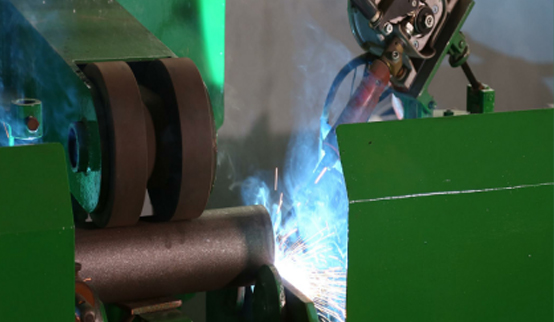 Afrikaans
Afrikaans  Albanian
Albanian  Amharic
Amharic  Arabic
Arabic  Armenian
Armenian  Azerbaijani
Azerbaijani  Basque
Basque  Belarusian
Belarusian  Bengali
Bengali  Bosnian
Bosnian  Bulgarian
Bulgarian  Catalan
Catalan  Cebuano
Cebuano  Corsican
Corsican  Croatian
Croatian  Czech
Czech  Danish
Danish  Dutch
Dutch  English
English  Esperanto
Esperanto  Estonian
Estonian  Finnish
Finnish  French
French  Frisian
Frisian  Galician
Galician  Georgian
Georgian  German
German  Greek
Greek  Gujarati
Gujarati  Haitian Creole
Haitian Creole  hausa
hausa  hawaiian
hawaiian  Hebrew
Hebrew  Hindi
Hindi  Miao
Miao  Hungarian
Hungarian  Icelandic
Icelandic  igbo
igbo  Indonesian
Indonesian  irish
irish  Italian
Italian  Japanese
Japanese  Javanese
Javanese  Kannada
Kannada  kazakh
kazakh  Khmer
Khmer  Rwandese
Rwandese  Korean
Korean  Kurdish
Kurdish  Kyrgyz
Kyrgyz  Lao
Lao  Latin
Latin  Latvian
Latvian  Lithuanian
Lithuanian  Luxembourgish
Luxembourgish  Macedonian
Macedonian  Malgashi
Malgashi  Malay
Malay  Malayalam
Malayalam  Maltese
Maltese  Maori
Maori  Marathi
Marathi  Mongolian
Mongolian  Myanmar
Myanmar  Nepali
Nepali  Norwegian
Norwegian  Norwegian
Norwegian  Occitan
Occitan  Pashto
Pashto  Persian
Persian  Polish
Polish  Portuguese
Portuguese  Punjabi
Punjabi  Romanian
Romanian  Russian
Russian  Samoan
Samoan  Scottish Gaelic
Scottish Gaelic  Serbian
Serbian  Sesotho
Sesotho  Shona
Shona  Sindhi
Sindhi  Sinhala
Sinhala  Slovak
Slovak  Slovenian
Slovenian  Somali
Somali  Spanish
Spanish  Sundanese
Sundanese  Swahili
Swahili  Swedish
Swedish  Tagalog
Tagalog  Tajik
Tajik  Tamil
Tamil  Tatar
Tatar  Telugu
Telugu  Thai
Thai  Turkish
Turkish  Turkmen
Turkmen  Ukrainian
Ukrainian  Urdu
Urdu  Uighur
Uighur  Uzbek
Uzbek  Vietnamese
Vietnamese  Welsh
Welsh  Bantu
Bantu  Yiddish
Yiddish  Yoruba
Yoruba  Zulu
Zulu tapered roller
Understanding Tapered Roller Bearings Design and Applications
Tapered roller bearings are a type of rolling-element bearing that uses tapered inner and outer raceways to provide superior load-bearing capacity while reducing friction. These bearings are particularly valued in industries where heavy loads and rigid performance are critical. From automobiles to heavy machinery, tapered roller bearings play a crucial role in ensuring operational efficiency and reliability.
Design Features of Tapered Roller Bearings
The unique design of tapered roller bearings consists of an inner ring (cone), an outer ring (cup), and tapered rollers that are arranged in a way that allows them to distribute load over a larger surface area. The rollers are tapered to maintain a line contact with the raceways, which aids in handling both radial and axial loads. This design feature is particularly significant in applications where thrust forces are prevalent.
The angle of the taper is critical, as it affects the bearing's load capacity and performance characteristics. Generally, a greater taper angle increases the bearing's axial load-carrying capacity, while also optimizing alignment and performance under various loading conditions. The sizes of the rollers and the width of the bearing are also important design considerations, impacting the overall durability and effectiveness of the assembly.
Additionally, tapered roller bearings can be found in various configurations, including single-row, double-row, and four-row bearings, each serving specific applications and performance requirements. Single-row tapered roller bearings are commonly used in automotive applications and gearboxes, while double-row designs provide enhanced stability and load capabilities in heavy-duty industrial equipment.
Advantages of Tapered Roller Bearings
The primary advantage of tapered roller bearings is their ability to support both radial and axial loads simultaneously, making them ideal for diverse applications. This characteristic allows for a more compact design, enabling machinery to be more efficient and lightweight without sacrificing strength. Moreover, tapered roller bearings excel in handling heavy loads and are capable of operating at high speeds.
tapered roller

Another significant benefit is their durability. The tapered design allows for uniform stress distribution across the bearing surface, which minimizes wear and extends the bearing's lifespan. This durability translates into reduced maintenance costs and improved reliability in performance-critical applications.
Tapered roller bearings are also highly adaptable. They can be tailored to meet specific operational needs, including specialized coatings and materials that enhance performance in extreme conditions, such as high temperatures or corrosive environments. This versatility makes them essential in various sectors, including automotive, aerospace, construction, and manufacturing.
Applications of Tapered Roller Bearings
Tapered roller bearings are pivotal in the automotive industry, where they are used in wheel hubs, transmissions, and differentials. In these applications, the bearings must endure both longitudinal and lateral forces while maintaining high speed and efficiency.
In heavy machinery, such as excavators and loaders, tapered roller bearings are used in pivot points and drive mechanisms. Their ability to handle significant radial and axial loads helps maintain operational stability and prolongs equipment lifespan.
Additionally, tapered roller bearings are crucial in wind turbines, supporting the nacelle and rotor assembly where both high axial and radial loads occur due to wind pressure and inertia. The robust design ensures reliability and efficiency, which is vital in maximizing energy output and reducing downtime.
Conclusion
Tapered roller bearings represent a sophisticated blend of engineering design and functionality. Their unique ability to manage both radial and axial loads while maintaining operational reliability makes them an invaluable component across various industries. As technology continues to advance, further enhancements in material science and manufacturing techniques promise to increase the performance and longevity of tapered roller bearings. Understanding these bearings and their applications is essential for professionals involved in engineering and design, as they play an integral role in the efficiency and safety of modern machinery and vehicles.
-
Trusted Conveyor Solutions from Leading Conveyor Idler Roller ManufacturersNewsJun.27,2025
-
Reliable Return Idler Solutions for Efficient Belt Conveyor SystemsNewsJun.27,2025
-
Precision Conveyor Accessories for Streamlined Material HandlingNewsJun.27,2025
-
High-Quality Belt Conveyor Idler Solutions for Efficient Material HandlingNewsJun.27,2025
-
High-Performance Belt Conveyor Pulleys for Reliable Material HandlingNewsJun.27,2025
-
Enhancing Material Handling EfficiencyNewsJun.27,2025





























